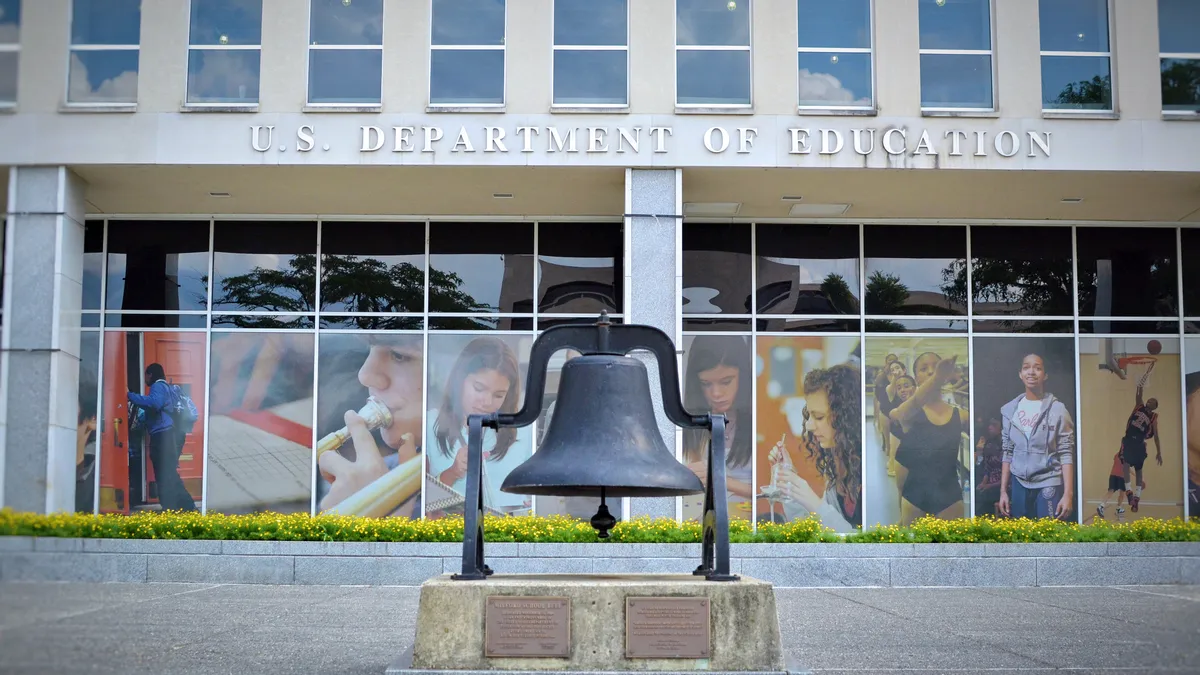Dive Brief:
- The U.S. Department of Education announced Friday that it is expanding its test of whether it should allow people who are imprisoned to access Pell Grants for their college education.
- Sixty-seven colleges and universities are joining the experiment, called Second Chance Pell, bringing the total number of participants to 130 schools. Nearly 30 schools plan to deliver instruction remotely or through hybrid models, the department said.
- The announcement comes as bipartisan support builds for improving incarcerated individuals' access to higher education.
Dive Insight:
The initiative started in 2015 as a way to test whether to restore Pell Grant access to incarcerated students, who in 1994 were banned from receiving the grants when a wave of tough-on-crime policies was signed into law.
Students in the program have earned more than 4,500 credentials since its launch, according to a report from the Vera Institute of Justice, a criminal justice reform advocacy group that's providing participating colleges with technical assistance.
So far, about half (46.5%) of students who've completed a credential earned a certificate or diploma, another 45.3% earned an associate degree and 8.2% earned a bachelor's degree, the report notes. Student participation has grown each year, from 6,116 people in the 2016-17 academic year to 9,756 in 2018-19.
The addition of 67 institutions should push that number higher, though some schools may take longer to get their programs off the ground if they don't have experience working with a correctional facility, said Ruth Delaney, program manager at the Vera Institute, in an interview with Education Dive.
The new participants include large institutions such as Georgia State and Georgetown universities and Miami Dade College, as well as smaller schools, including Lane College, in Tennessee, and the University of Saint Mary, in Kansas. All are public or private nonprofit institutions.
More than 180 institutions were interested in participating in the expanded program. The colleges were selected to ensure the experiment has institutional, programmatic and geographic diversity, the department said.
Yet several barriers are common to incarcerated students participating in Second Chance Pell. For instance, many don't have access to their financial records needed for federal aid applications or struggle to collect these documents from their family or friends.
Correctional facilities may also interrupt a student's education mid-term by transferring them to another location. Some prisons employ policies more supportive of educational programs, Delaney said, including by putting a transfer-hold on students participating in Second Chance Pell.
Colleges should explore what instructional options they'll have with their partner prisons, especially if they haven't worked together before. "There may be assumptions that each side has about what's going to be available and usable," Delaney said.
Before launching a program, the college should know how long it takes to get textbooks approved for incarcerated students' use and whether they will have access to the internet. Distance programs should be particularly mindful of how they plan to fulfill the requirement for instructors to have regular and substantive interaction with their students.
The idea of restoring Pell Grant eligibility to incarcerated students has been gaining bipartisan support.
Last year, Rep. Danny Davis, D-Ill., introduced a bill that would strike language from the law that bars federal and state prisoners from receiving the funding. And Sen. Lamar Alexander, R-Tenn., chair of the Senate's education committee, has backed the Second Chance Pell program.











